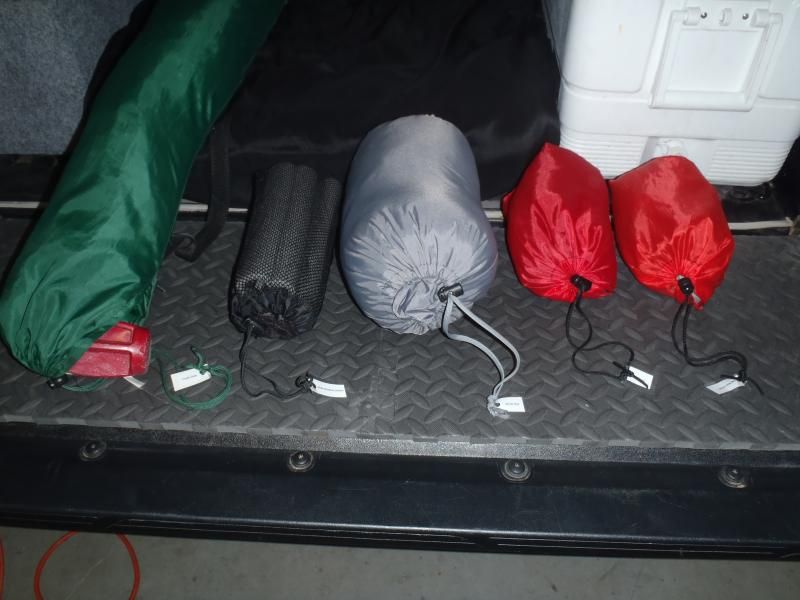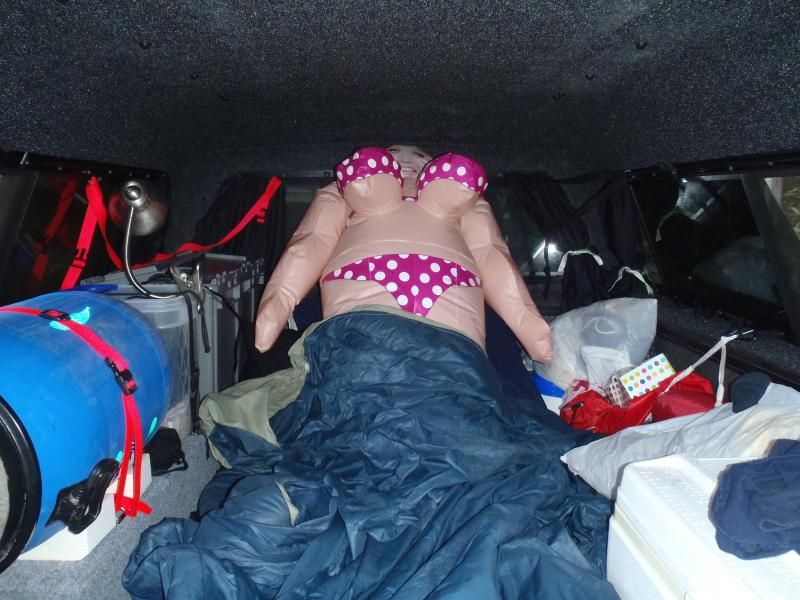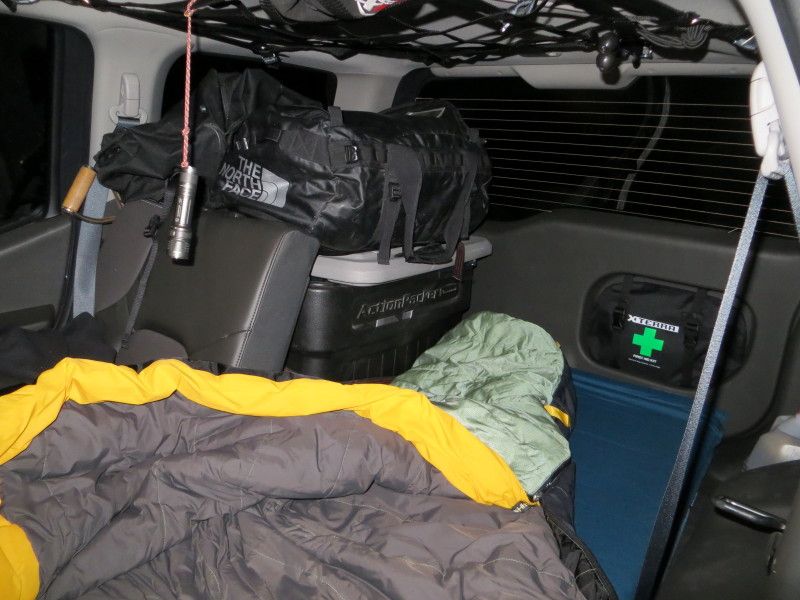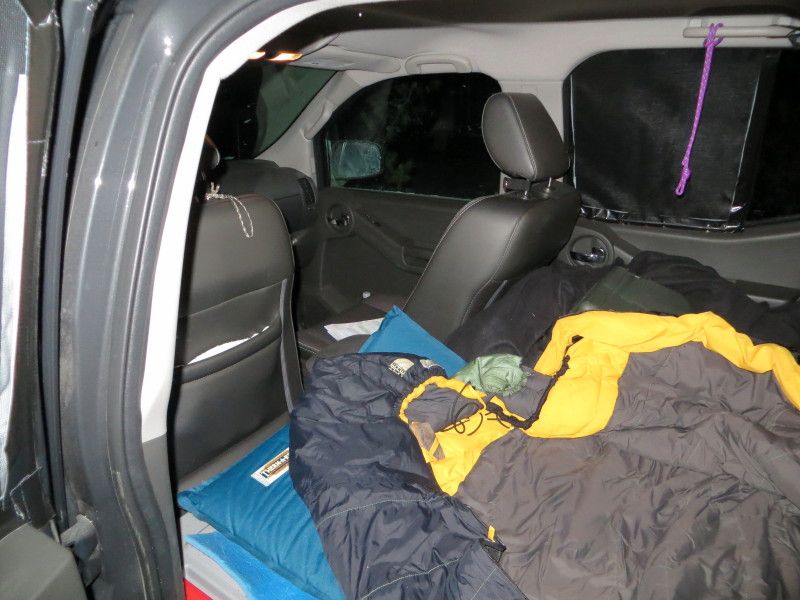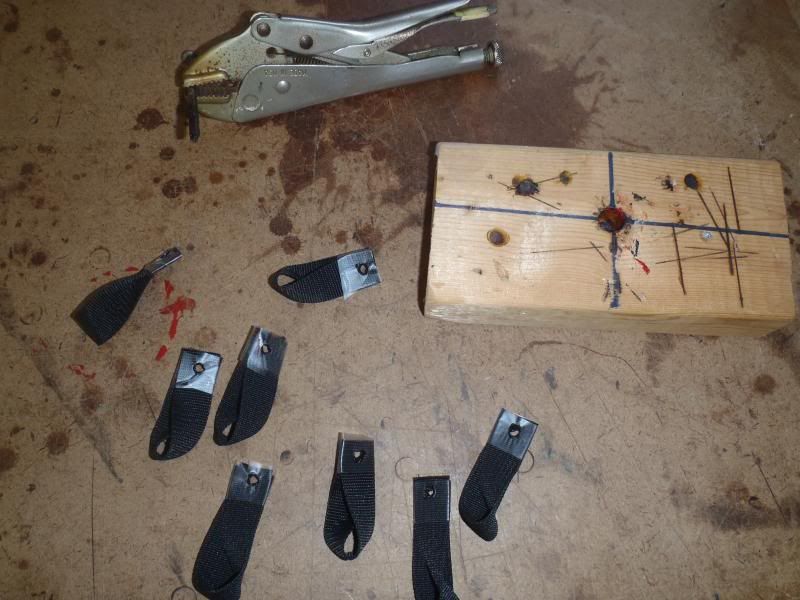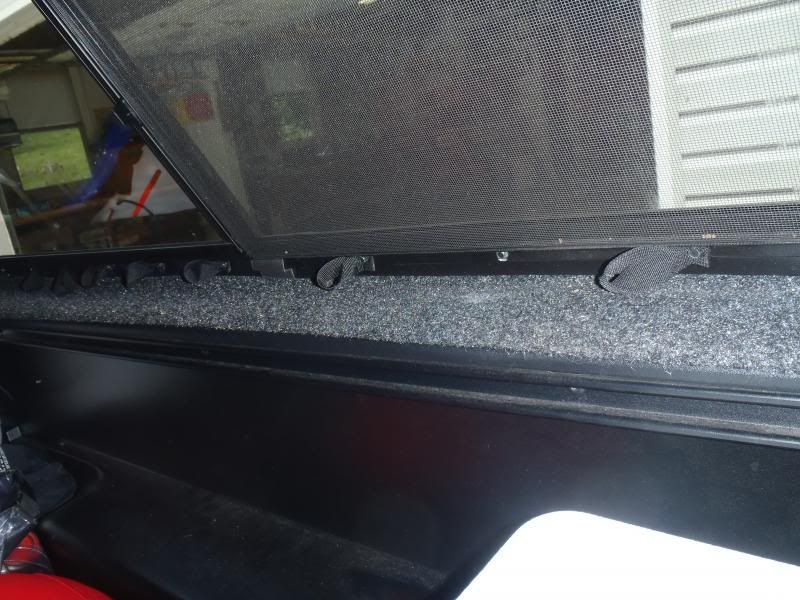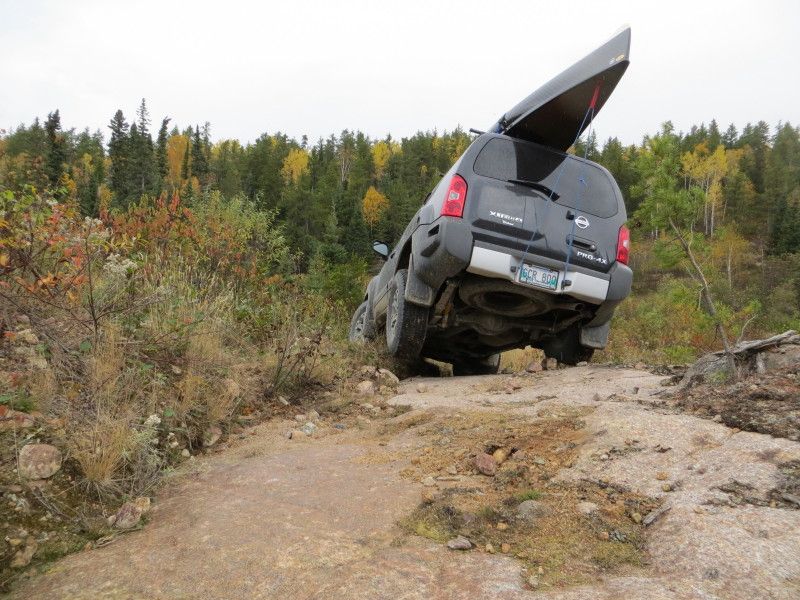G
Guest
Guest
I had a good start at it, and refined the truck outfitting over a few trips.
http://www.canoetripping.net/forums...sions/diy/595-new-tripping-vehicle-outfitting
But I lived in the back of the Tacoma for the month of October while working on a friend’s property in North Carolina and discovered a few things that months of travel had not revealed.
I had been storing clothes/gear in a grey plastic box on the paddle box shelf at the head of the bed. The top of that plastic box made a decent bedside table to hold book, glasses, light etc. But this trip I was able to park beside an electrical outlet and run a clip-on 110v lamp. And on warm nights a small fan.
The box is less than ideal for that use; with the lamp clamped on the hinged lid the surface isn’t level, and I can’t easily access the stuff in the box with stuff piled and attached on top. I need an easily removable open-front box with a raised lip top to hold/clamp my bedside accoutrements. Add to that the clamp on light I had was massively oversized for my needs (and poorly designed; the metal shade and switch both got hot as heck).

I just happen to have the ideal box to reconfigure. I repurposed the locking box I made 30 years ago for my ’84 travelling truck. I already have the locking paddle box and don’t need another.
Easy peasy. Take the hinges and handles off, remove the lid and use it as an open front box with the lid on top. It fits perfectly on the paddle shelf box at the head of the bed.
I carpeted the “nightstand” box, so if I toss and turn up against it is soft and splinter free. I always underestimate the amount of carpet it takes to wrap a box in 3D – I bought twice as much as I thought I needed and had just enough.

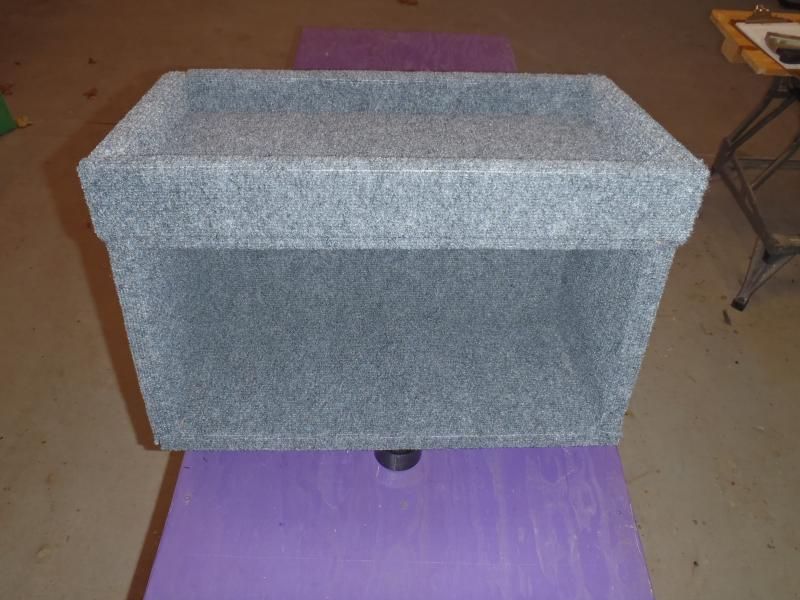
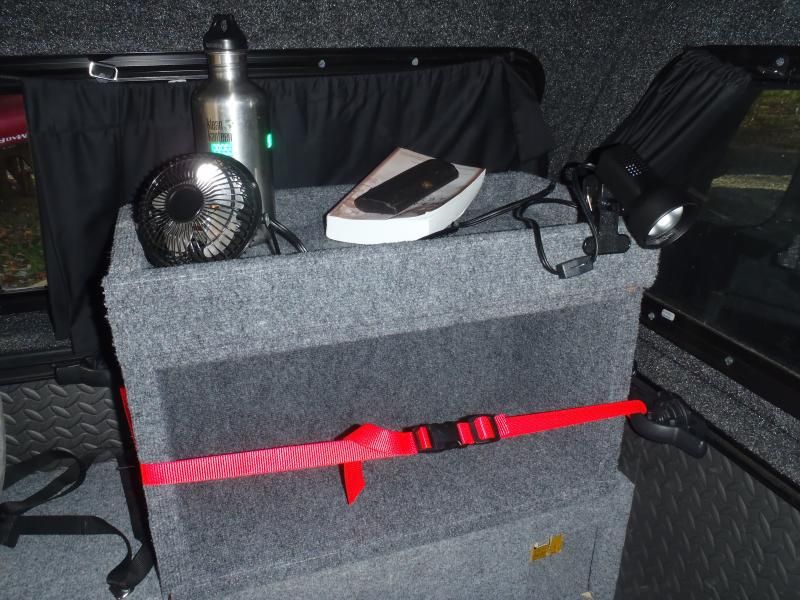
New mini 110V clamp light from Home Depot and that takes care of bedside storage and furnishings on the driver’s side. The other side of the bed needs something for organizational help. I use that area for stuff bags, sleeping bags, tent and etc soft stuff, but even with some of the bagged gear held in mini hammocks it quickly becomes a disorganized mess.
I need some organizational stability on that side as well - a shelf running as far back as the ice chest. Same height as the paddle box shelf, so I can slide sheets of plywood or similar into the bed when I need to transport such stuff, but open fronted so I can store and access gear underneath the shelf or on top.
I’m smarter than I look. I saved the paper template for the base of the paddle box shelf. No need to re-measure or make another template for that mirror image.
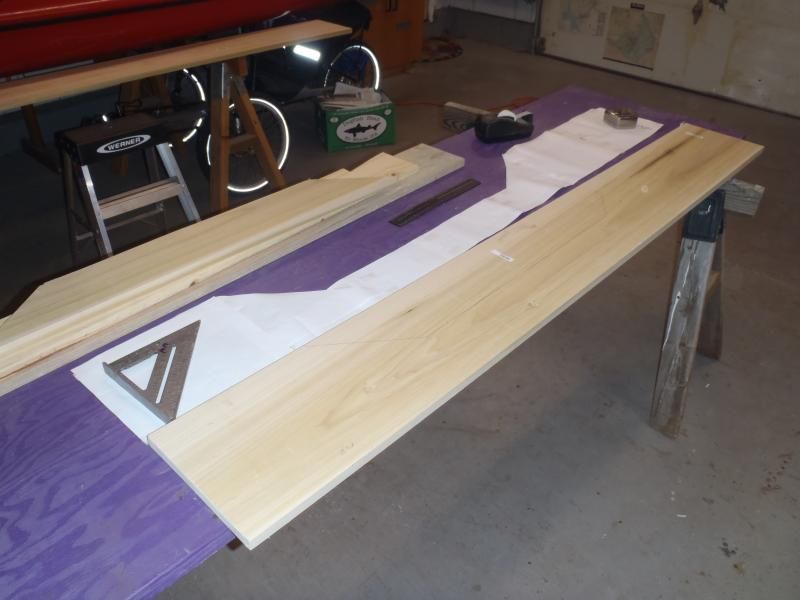
A couple pieces of poplar, another couple feet of carpet and presto, a custom side storage shelf. Since the top of those side boxes rest atop the wheel wells they are quite sturdily weight bearing.
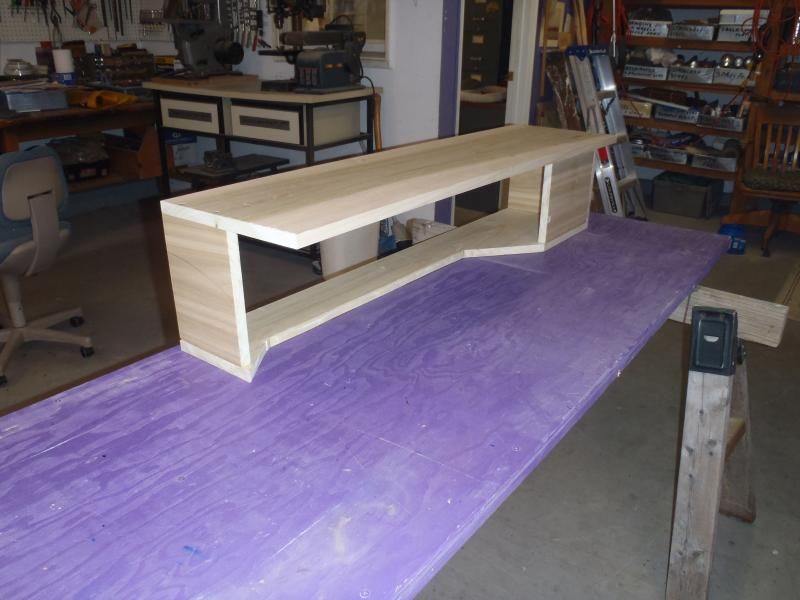

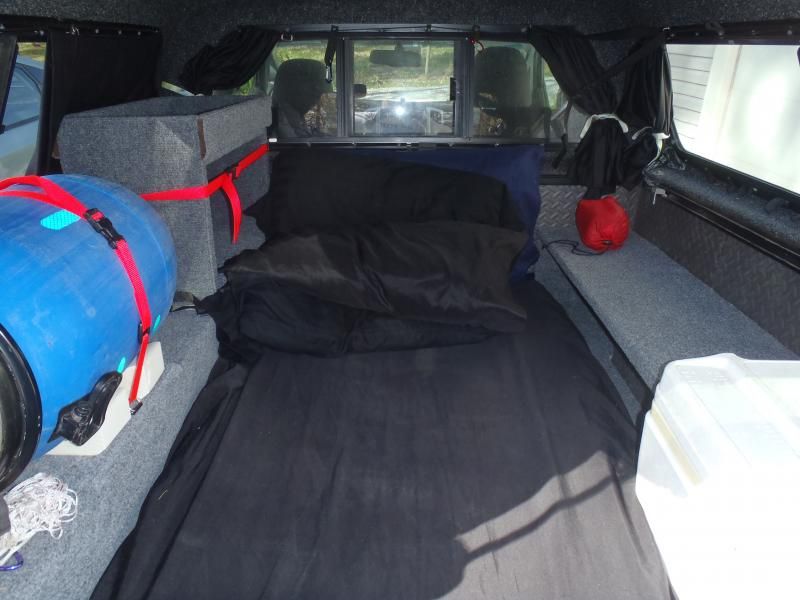
Both the paddlebox and open front shelf are anchored but easily removable by extracting a couple of screws. The Tacoma bed has indentations in the side walls to accommodate crosspieces of lumber to make a platform. I G/flexed a piece of wood into those indents and the boxes are simply screwed into those wood blocks from the top.
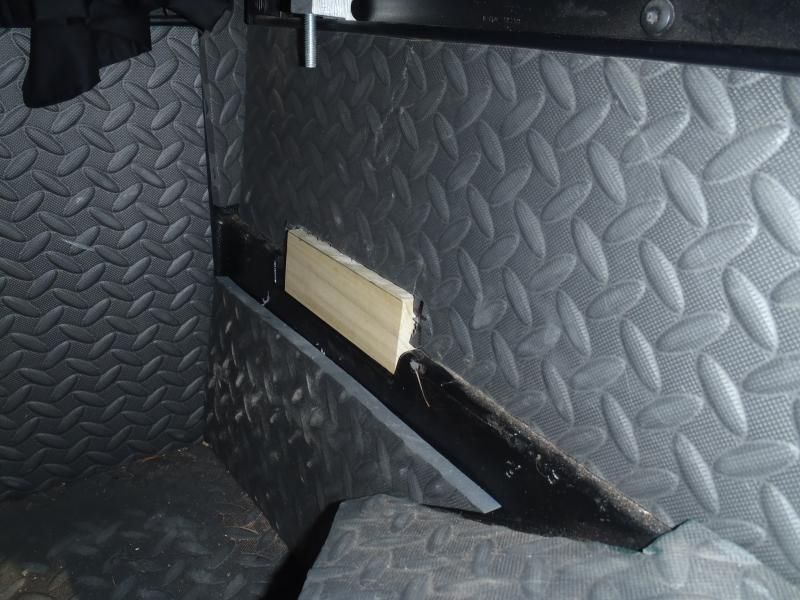
I don’t see myself taking either side shelf out anytime soon, but if necessary I need only extract a couple of screws.
The tripping truck grows more comfortable and functional every trip. It might be time to hit the road again soon and try out the new accommodations.
http://www.canoetripping.net/forums...sions/diy/595-new-tripping-vehicle-outfitting
But I lived in the back of the Tacoma for the month of October while working on a friend’s property in North Carolina and discovered a few things that months of travel had not revealed.
I had been storing clothes/gear in a grey plastic box on the paddle box shelf at the head of the bed. The top of that plastic box made a decent bedside table to hold book, glasses, light etc. But this trip I was able to park beside an electrical outlet and run a clip-on 110v lamp. And on warm nights a small fan.
The box is less than ideal for that use; with the lamp clamped on the hinged lid the surface isn’t level, and I can’t easily access the stuff in the box with stuff piled and attached on top. I need an easily removable open-front box with a raised lip top to hold/clamp my bedside accoutrements. Add to that the clamp on light I had was massively oversized for my needs (and poorly designed; the metal shade and switch both got hot as heck).

I just happen to have the ideal box to reconfigure. I repurposed the locking box I made 30 years ago for my ’84 travelling truck. I already have the locking paddle box and don’t need another.
Easy peasy. Take the hinges and handles off, remove the lid and use it as an open front box with the lid on top. It fits perfectly on the paddle shelf box at the head of the bed.
I carpeted the “nightstand” box, so if I toss and turn up against it is soft and splinter free. I always underestimate the amount of carpet it takes to wrap a box in 3D – I bought twice as much as I thought I needed and had just enough.



New mini 110V clamp light from Home Depot and that takes care of bedside storage and furnishings on the driver’s side. The other side of the bed needs something for organizational help. I use that area for stuff bags, sleeping bags, tent and etc soft stuff, but even with some of the bagged gear held in mini hammocks it quickly becomes a disorganized mess.
I need some organizational stability on that side as well - a shelf running as far back as the ice chest. Same height as the paddle box shelf, so I can slide sheets of plywood or similar into the bed when I need to transport such stuff, but open fronted so I can store and access gear underneath the shelf or on top.
I’m smarter than I look. I saved the paper template for the base of the paddle box shelf. No need to re-measure or make another template for that mirror image.

A couple pieces of poplar, another couple feet of carpet and presto, a custom side storage shelf. Since the top of those side boxes rest atop the wheel wells they are quite sturdily weight bearing.



Both the paddlebox and open front shelf are anchored but easily removable by extracting a couple of screws. The Tacoma bed has indentations in the side walls to accommodate crosspieces of lumber to make a platform. I G/flexed a piece of wood into those indents and the boxes are simply screwed into those wood blocks from the top.

I don’t see myself taking either side shelf out anytime soon, but if necessary I need only extract a couple of screws.
The tripping truck grows more comfortable and functional every trip. It might be time to hit the road again soon and try out the new accommodations.




